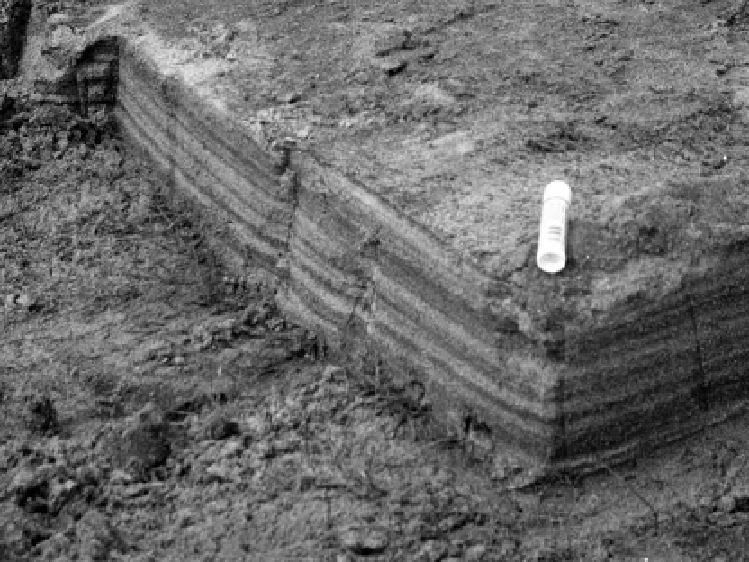Geoscience Reference
In-Depth Information
Figure 5.3.
Sedimentary unit deposited during the December 26th 2004 Asian
tsunami in Tamil Nadu, India.
towardsthe top) with the only sedimentary structures consisting of faint hor-
izontal stratification (layers) in the upper part of the deposit. The 2004 south
Asian tsunami deposited planar (horizontal) beds of normally graded sands
(Fig. 5.3)that tapered in thickness landwards from 40 cm near the beach to less
than 10 cm thick over 300 m inland along the southeast Indian coast. At least six
separate horizontally bedded units of sand can be seen in Fig. 5.3 corresponding
to thesix prominent waves that impacted the coast here.
Erosional features
Erosional features, mainly within barrier and beach sands, have also
been observed following a number of recent tsunamis. The sand barrier at
Sissano Lagoon, showed two main forms of erosion following the 1998 Aitape
tsunami (Figs. 5.4 and 5.5). The rear of the barrier was scarped to a height of
1--1.5 m for a distance of 100--150 m alongshore and below the scarp, scour holes
developed ranging in size from 10 m to approximately 1 m diameter and up to
1.5mdeep. Some of the scour holes occurred on the lee, or lagoon side, of trees.
These were generally the narrowest diameter scour holes (Fig. 5.4), whereas the

Search WWH ::

Custom Search